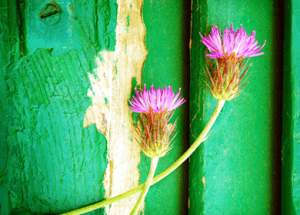
Cooking with flowers is an art form that has been historically embraced by the Chinese, Roman, Middle Eastern and Indian cultures. Dishes accented by flowers were also frequently enjoyed in Victorian-era Europe.
While many flowers cannot be eaten, those that can lend a lovely flair to any plate, as well as an exotic and unexpected flavor. Some are used simply as garnishes; however, others offer distinct health benefits as well. The following five selections can improve your health while transforming your meal into a delight for the eyes and taste buds.
Clover: These blossoms, in both the white and red varieties, have a sweet flavor reminiscent of licorice. Clover flowers have been used in traditional folk remedies for coughs, colds, rheumatism and gout. Choose the brightest colored blossoms, and avoid eating these flowers raw, as they can be hard on the digestive system if uncooked.
Rose: Both rose petals and rose hips, the swollen bases of the flower that develop into the seed pods, can be eaten and have distinct therapeutic properties. Each of the individual species, of which there are over 100, has slightly different uses. In general, rose petals are a great source of vitamins A, B3, C and D, bioflavenoids and antioxidants. When enjoyed in tea form, rose petals have traditionally been used to soothe headaches, depression, nervous disorders, digestive issues and respiratory ailments. Rose hips have been used against inflammation, constipation and urinary tract problems. They may also provide support to the immune system in fighting certain cancers.
 Dandelion: Dandelion flowers are rich in vitamins and minerals, and have been used throughout history to aid the body in dealing with liver problems, skin diseases, fevers and diarrhea. They also have diuretic qualities, and therefore can be effective against fluid retention. The flowers have also been used within the Indian and Chinese cultures as a digestive aid and anti-inflammatory agent. Dandelion roots are thought to purify the blood.
Dandelion: Dandelion flowers are rich in vitamins and minerals, and have been used throughout history to aid the body in dealing with liver problems, skin diseases, fevers and diarrhea. They also have diuretic qualities, and therefore can be effective against fluid retention. The flowers have also been used within the Indian and Chinese cultures as a digestive aid and anti-inflammatory agent. Dandelion roots are thought to purify the blood.
Lotus: All parts of this worldwide peace-symbolizing plant are safe for human consumption. Lotus has antioxidant properties, acts as an astringent and may help reduce cholesterol. This versatile flower also aids the body in fighting colds, coughs insomnia and urinary problems. Some evidence suggests that it regulates blood pressure and lowers blood sugar, and as a result, those people who take medications for these conditions should consult a doctor or naturopath before consuming lotus.
Borage: Known as the ‘herb of gladness,’ borage is high in fatty acids, acts as an anti-inflammatory agent, aids in hormonal balance and can regulate the flow of breast milk in lactating mothers. This brilliant blue flower – one of the rare existing blue foods – has been used to combat depression and other types of emotional distress.
When cooking with flowers, remember to keep the dishes simple, as the gentle flavors easily become overpowered by stronger-tasting ingredients. Also, it is crucial to make sure that the blossoms that you eat have not been treated by chemicals and pesticides. Growing your own edible garden in your yard or window box is ideal.
-The Alternative Daily
Sources:
http://whatscookingamerica.net/EdibleFlowers/EdibleFlowersMain.htm
http://www.naturalnews.com/025674_flowers_edible_healthy.html
http://www.medindia.net/patients/lifestyleandwellness/edible-flowers-for-health.htm

